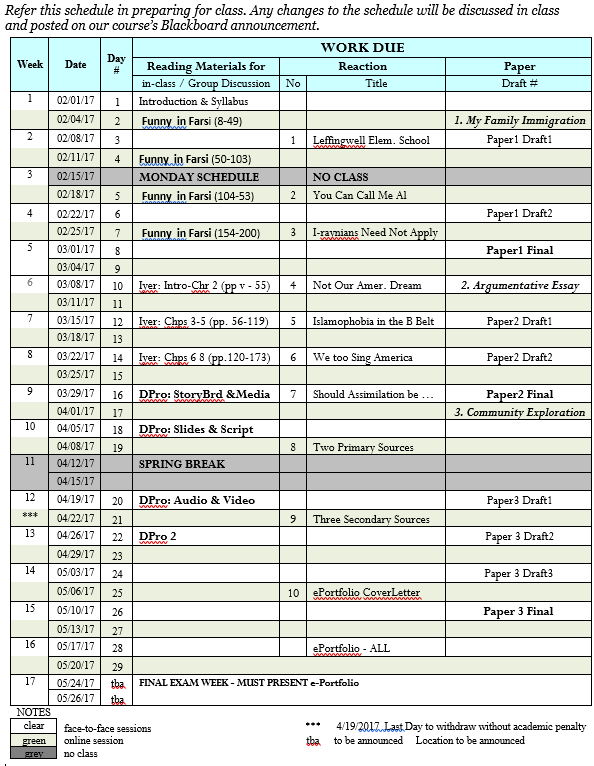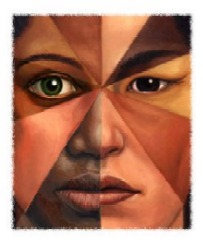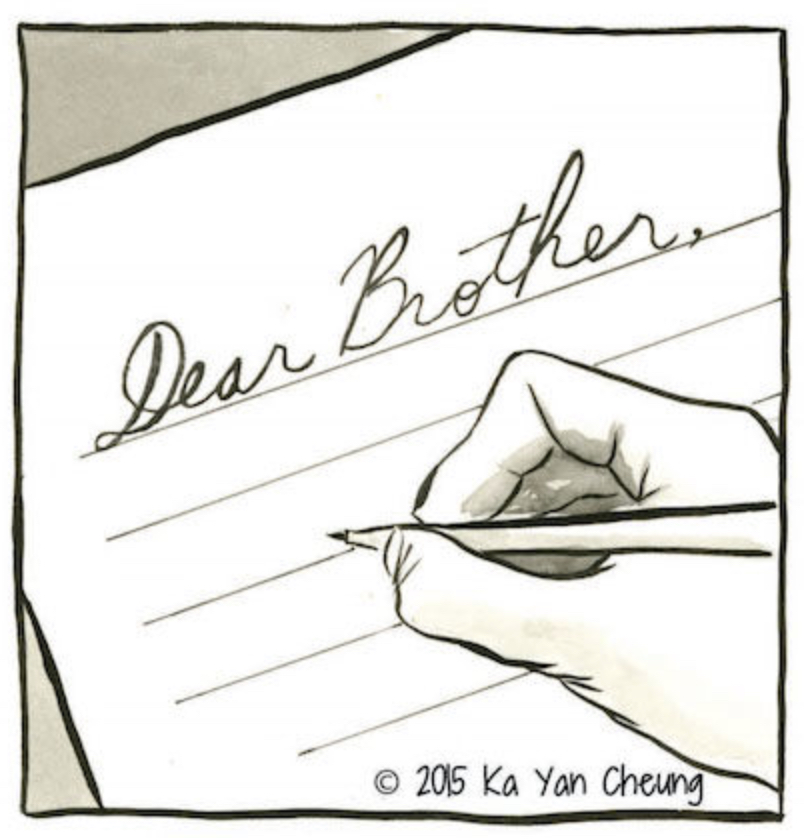Developing and Teaching a Course Using Non-fiction Work on Asian and Muslim Immigrant Experience
Trikartikaningsih Byas, Department of English, Queensborough Community College
What were your goals/hopes in integrating Asian American content in your course? Did you have specific learning objectives?
I developed and taught an English course entitled ENGL265 Immigrant Experience in Literature, a new course approved in the spring of 2016. This course grew out of a (EN225) Special Topics course. This spring 2017 was the second semester I taught the course as a new course number.
For the past three years, starting when it was still a Special Topics course, this immigrant experience course has often been offered as a Partially Online (PNET) class. As a PNET class, students come to class once a week for two contact hours, and they have to complete assigned online activities (tasks) either individually or as a group for the second session of the week.
Starting this spring 2017 semester, this ENGL265 section was also offered as a Writing-Intensive section. As a Writing-Intensive class, students were required to produce an equivalent of 15 pages of papers.
My main goal was to engage students in conversation about the concept of America as a country of immigrants by reading and discussing stories and experiences of real immigrants, especially those of Asian and Middle Eastern backgrounds.
The keywords I was trying to focus on this semester include:
- Acculturation (Assimilation, Adaptation, Integration, Separation, Marginalization)
- Discrimination (with special discussion on Islamophobia)
- Ethnic enclaves
I had 22 students listed at the beginning of the semester.
What did you do in your course this semester to integrate As Am content?
As indicated in the syllabus, I used two main texts representing the Asian American (and Middle Eastern) immigrants. The first text is a memoir, while the second contains the author’s reflections on the hate violence, Islamophobia and xenophobia occurring in different places of the country, especially after the 9/11 tragedy.
- Dumas, Firoozeh. Funny in Farsi: A Memoir Growing Up Iranian in America. New York: Random House, 2004. ISBN: 978-0-8129-6837-8
- Iyer, Deepa. We Too Sing America: South Asian, Arab, Muslim, and Sikh Immigrants Shape Our Multiracial Future. New York: The New Press, 2015. ISBN: 978-1-62097-014-0
The students completed a series of weekly activities related to these two main texts, described below. (See the Semester Schedule shown below).

- Each week, students were assigned to read certain segments of the book (about 50 pages) and took turns leading discussion in their Reading Group discussion forum on Blackboard. (See Attachment 2 Reading Group instructions)
- Students also wrote Reactions on an assigned chapter. In writing their Reactions, students summarized the story or information from Chapter, then analyzed at least two important points and synthesized them with their own experience. (See Attachment 3 Reactions to Reading)
- In addition to discussing the assigned segment of the books with their reading group and writing an individual Reaction to the assigned chapters, students also wrote two major papers within these first eight weeks of the semester (See attached Sample Writing Assignments [attachments 4 & 5]).
- Major Paper 1 (Attachment 4). Using the first text (Dumas’ Funny in Farsi) as a model, students were asked to write their own (or their family’s) immigration experience for their Major Paper 1. Students developed their Paper 1 in the first four weeks of the semester. They wrote two drafts (about one draft per week), which were shared and peer-reviewed (in class or on Wikis), before submitting the revised and finalized Paper 1 for grading.
- Major Paper 2 (Attachment 5). Referring to the facts and data from the second text (Iyer’s We Too Sing America), students wrote an argumentative essay about a topic of their choice for their Major Paper 2. They were required to use information from either one (or both) of the texts plus a recent news article to support their argument. Students developed their Paper 2 in the second four weeks of the semester. They wrote two drafts (about one draft per week), which were shared and peer-reviewed (in class or on Wikis), before submitting the revised and finalized Paper 1 for grading.
- The third Major Paper was a research project which students wrote in about six weeks and involving three drafts. Students had to gather information from both primary and secondary sources, which they had to cite using the MLA Style.
In addition to the two major texts, I also posted materials on the Course Blackboard site as other resources for discussion. These materials were presented in the following order:
Weeks 1-2. I posted the following video on Immigration, and asked students to write their reflections on the Blackboard Wikis.
- An Animated Overview of American Immigration History (from Business Insider):In 1607, the English established their first permanent settlement in Jamestown, Virginia. Over the coming centuries, millions of people from around the globe were attracted to this New World that came to be the US for a chance at a better life.Today, more than 1 in 8 Americans are immigrants, and almost all are descendants of those born in foreign lands.Produced by Alex Kuzoian.
YouTube Link: https://youtu.be/Fe79i1mu-mc
- Other important resources on immigration history:
- http://www.libertyellisfoundation.org/immigration-timeline
- http://www.loc.gov/teachers/classroommaterials/presentationsandactivities/presentations/immigration/timeline.html
- http://immigration.procon.org/view.timeline.php?timelineID=000023
- For history buffs: https://edu.hstry.co/timeline/a-history-of-immigration-in-the-usa
Weeks 7-8. After students finished reading the two texts, I posted the following materials to help students write their Major Paper 2.
- Acculturation
- New World Encyclopedia
- Study.com
- Brookings Institution: Do We Really Want Immigrants to Assimilate?
- Discrimination
- Islamophobia
- “Islamophobia is a contrived fear or prejudice fomented by the existing Eurocentric and Orientalist global power structure. It is directed at a perceived or real Muslim threat through the maintenance and extension of existing disparities in economic, political, social and cultural relations, while rationalizing the necessity to deploy violence as a tool to achieve “civilizational rehab” of the target communities (Muslim or otherwise). Islamophobia reintroduces and reaffirms a global racial structure through which resource distribution disparities are maintained and extended.” (University of California Berkeley’s Center for Race & Gender)
- Islamophobia Network
- Fear, Inc 2.0 (2015)
- Fear, Inc. (2011)
- Islamophobia Studies Journal
- Sharia Law
- Sh. Omar Suleiman – Out of Context
- Teaching Tolerance website
- Muslims for Progressive Values
Week 9. After students completed the Major Paper 2, I posted the following links about ethnic enclaves or neighborhoods, which was expected to help them generate ideas for the Major Paper 3.
- Ethnic Enclaves
- General description of Ethnic Enclave from Encyclopedia.com – Ethnic Enclave
- New York Times article on ethnic neighborhoods
- Eighteen ethnic micro neighborhoods in NYC
How did it go? What was effective? What would you do differently, and how/why?
To summarize the semester, I would like to focus on four things:
-
- Partially Online and Writing Intensive Class. Being a Partially Online (PNET) class, we only meet once a week for two hours. Therefore, we often did not have time to discuss in-depth as a class and had to resort on the online group discussion to discuss and clarify ideas. In their evaluation of the course, students who mostly were taking the class to allow them to graduate, seemed to understand what a Partially Online class required. Only one student constantly complained about the ‘online’ tasks, while others found the structured online discussion useful, though burdensome. Most also realized that in a Writing Intensive class, they were expected to write a lot.
- Assignments. The first eight weeks were especially jam-packed since students worked on multiple things. Every week within these first two months, students were to complete the following tasks:
- Read about 50 pages of the text
- Discussed what they read with their Reading group,
- Read a chapter more in-depth, and write a Reaction
- Work on their ideas for their major Paper.
Students did complain every now and then, but as soon as they created a work plan and schedule, most were able to complete all tasks, and even performed extra work, for extra points.
- Online Materials. I introduced most of the Online Tasks only after students finished reading both textbooks. I realized that some online materials and tasks can be presented earlier, to enhance the discussion on issues raised in the texts.
- Additional Projects. In addition to the traditional paper-based products, students were also required to convert two of their major Papers into digital projects, using multiple computer software: Microsoft PowerPoint, Audacity, and Camtasia Studios. Finally, towards the end of the semester, students were assigned to compile their work to be showcased on their e-Portfolio (on Digication), which they presented on the Final Exam day.
Modification Plan
I am still assigned to teach the course as a Partially Online and Writing Intensive section in the following 2017/2018 academic year. I plan to still use the two books as our main texts. Also, although I would agree with the students that I assigned a lot of reading and writing in different genres and modalities in this class, I do not plan to change the types of assignments or their modalities. However, I do plan to make modifications in the following areas:
-
-
- Tasks related to the two textbooks.
- Add questions for discussion in the Reading Group forum. By posting discussion question(s), I hope the groups will be able to get to the important points more quickly in their discussion.
- Regular reminder. Remind students regularly on the work, especially the first eight weeks, so they would not slack off. Of the 22 students, three officially withdrew while three others just stopped coming. Of the remaining 16 students, five were not doing the best they could, mainly because they slacked off. I hope reminding students regularly will serve as the needed reminder to help those who stray to go back on track.
- Order of online materials (tasks).To make the online materials more relevant to the class discussion and/or the major paper, I plan to reorder and present the online materials as follows:
- Week 1: Animated Video of American Immigration
Will ask students to review and reflect by the second session of the first week. - Week 3: Acculturation
Will refer to this material to discuss the various acculturation stages of Dumas’ family members. - Week 6: Ethnic Enclaves
Will connect to Dumas’ reference to Iranian community in California. Ask students to share a quick observation of their own community. Will recycle the discussion in Week 9, to help students in brainstorming ideas for Major Paper 3. Use Hicksville as an example. - Week 7: Discrimination
Will use the health impact of discrimination as an example of how we can look at an issue from different angles. - Week 8: Black Lives Matter
- Week 10: Islamophobia
Discuss the materials in connection to Iyer’s chapter 4. - Week 12: Immigration Reform
- Week 1: Animated Video of American Immigration
- Additional Projects. I will ask students to upload their digital project of Paper 1 to the e-Portfolio for peer review, instead of Blackboard Wikis. This semester, students accessed their e-Portfolio only at the beginning (creating their e-Portfolio) and at the end (uploading their showcase) of the semester. Asking them to upload their digital project 1 to the e-Portfolio, will not only give them an opportunity to work on their e-Portfolio, especially on how to upload a video. Asking them to access their e-Portfolio halfway in the semester also allows me to see who still is having difficulties with the e-Portfolio platform, reducing the problems at the end of the semester.
- Tasks related to the two textbooks.
-








